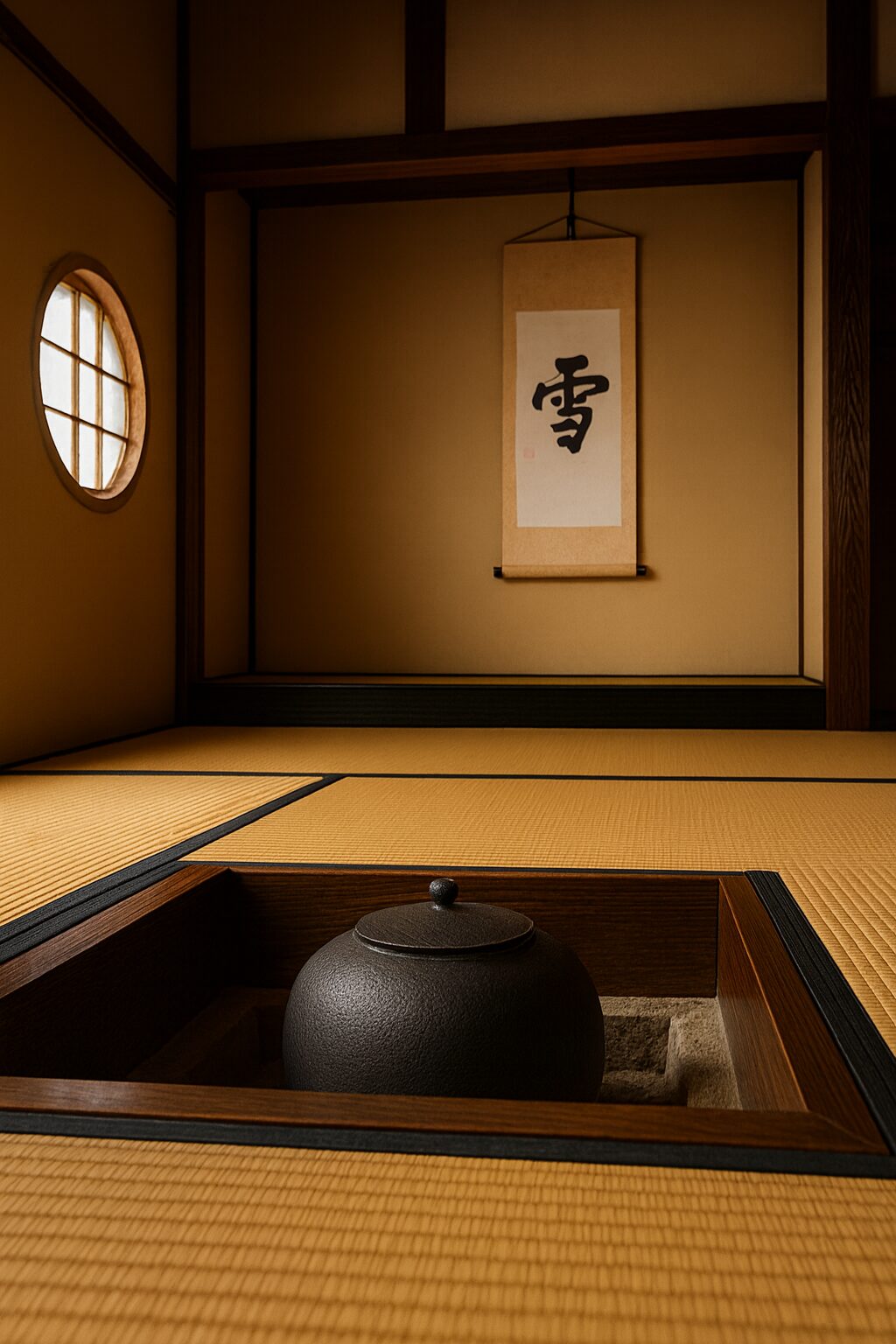By Kokoro Still
In Japan, a chagama—the iron kettle used in the Japanese tea ceremony—begins not with the lively voice of boiling water,
but with the pause just before the charcoal fully breathes.
The water is still,
a thin thread of steam beginning to rise,
and Kokoro rests in this stillness—
a place where even the smallest shift can be felt.
Heat works its way into the water,
and in the breath before silence turns to voice,
time seems to gather and hold.
Before the Water Speaks
One winter morning, my grandmother took me to a small tea room in the old part of town.
Tatami beneath my knees,
a square opening in the floor before me,
and from it, the upper half of a chagama rose above the mat’s surface,
its iron calm and seasoned with years.
From the center, a thin thread of steam had begun to rise.
The room was dim,
and my breath dissolved into that white thread.
Beyond the shōji felt distant,
and time seemed gathered here, unmoving.
Listening was not for the rush of boiling,
but for the quiet threshold
where silence leans toward its first voice.
That threshold still held a deep reserve of quiet.
Beneath the lid, the smallest bubbles
touched the surface and vanished—
a sign of heat gathering,
yet so slight it left the stillness intact.
When the Steam Found Its Voice
The bubbles multiplied,
and the resonance deepened into a steady, unbroken sound.
The water reached its full voice,
and steam rose in a constant flow from the opening—
unhurried,
its calm presence filling the room without disturbing the stillness.
The air warmed,
and the shōji took on a thin veil of moisture,
the chagama holding its quiet fullness
as the moment approached
to welcome the next touch of water.
The Stillness After the Pour
The host’s hands were steady, unhurried.
When the water was poured,
its voice became a stream,
then faded.
The chagama rested again,
holding warmth in its body
long after the sound had gone.
The steam thinned,
and the air returned to clear,
but something stayed—
not heat,
not scent,
but the trace of a moment
that had been fully heard.
Where Chagama and Kokoro Remain
Long after the steam had vanished,
the room was not empty.
The chagama remained,
and Kokoro stayed as the stillness within—
without form,
yet whole.
Even now,
when water begins to sound nearby,
I return to that winter morning,
to the way the steam paused
before it touched the light.
Here is where chagama and Kokoro exist together:
not in the sound of boiling,
but in the calm that follows what has been shared—
a calm that may lead
to the next bowl,
the next unhurried breath of steam.
Featured image: The image was created by AI (ChatGPT)



Comments